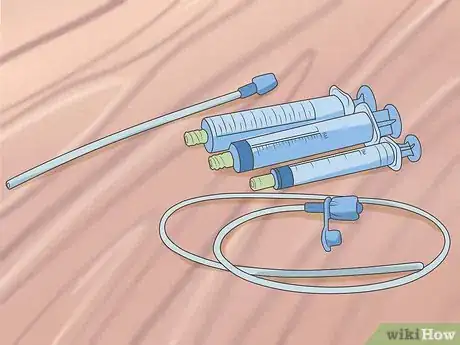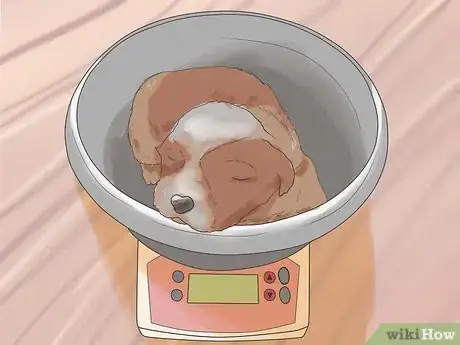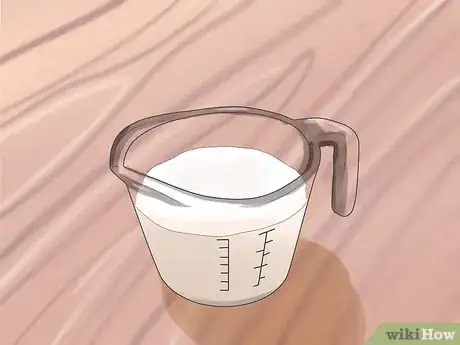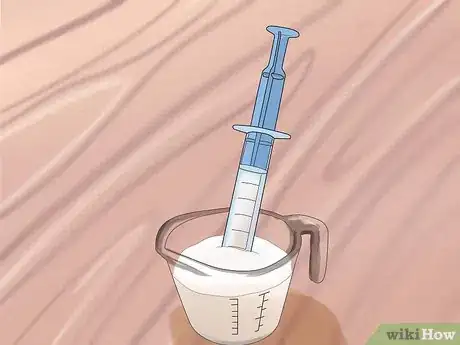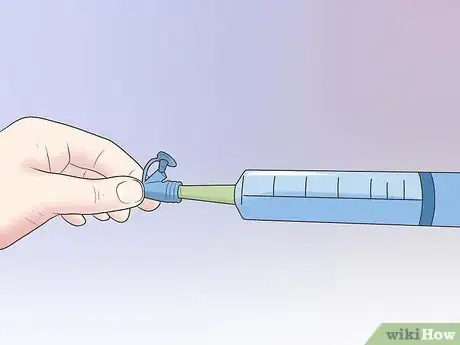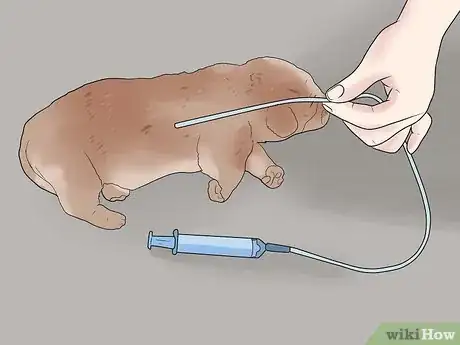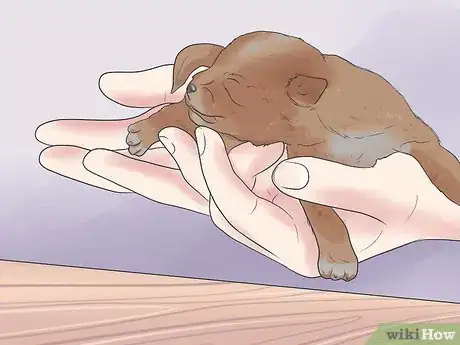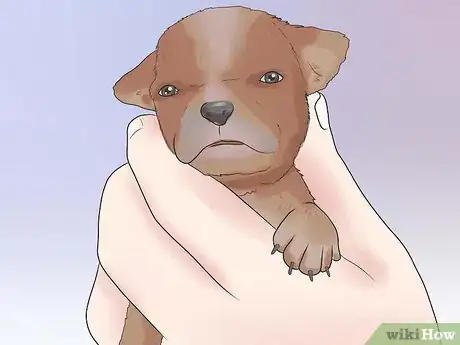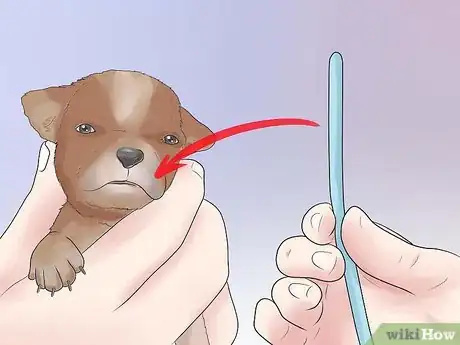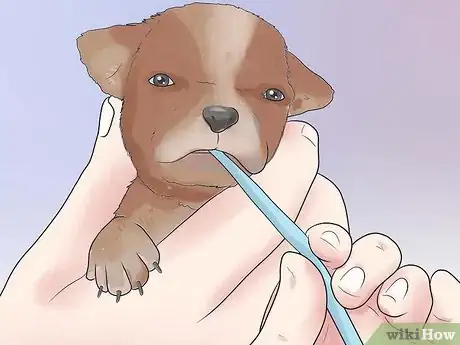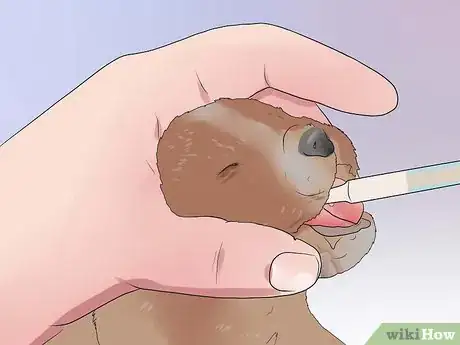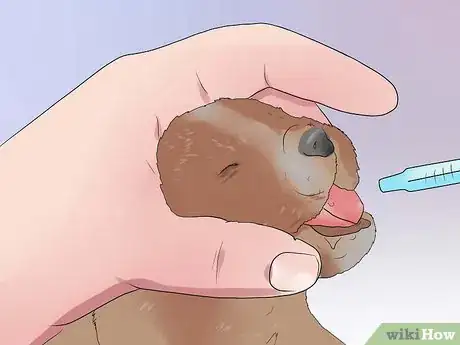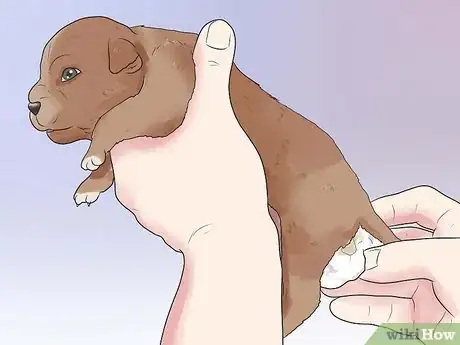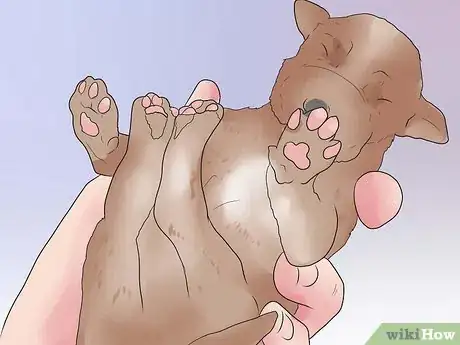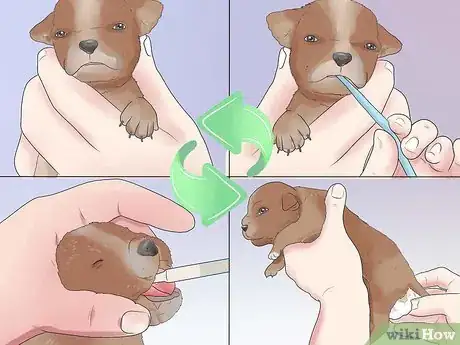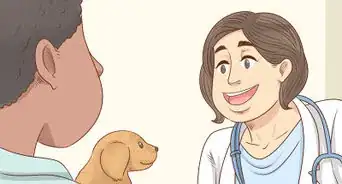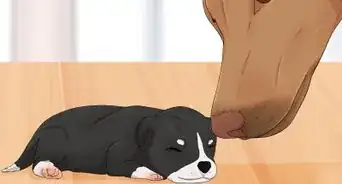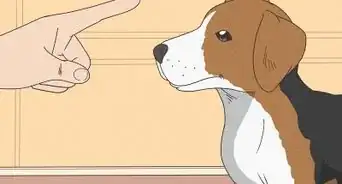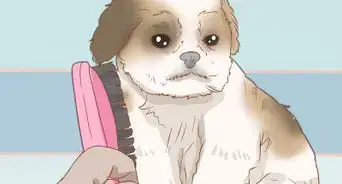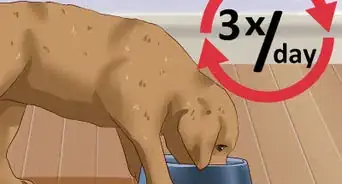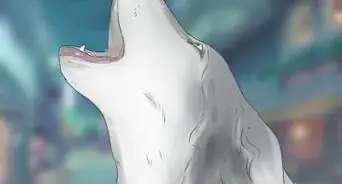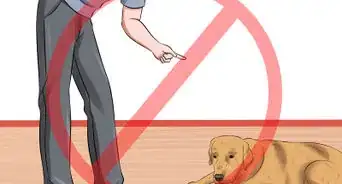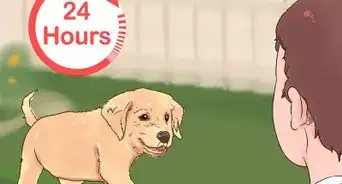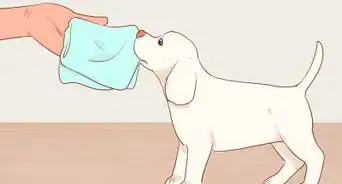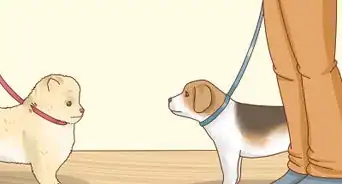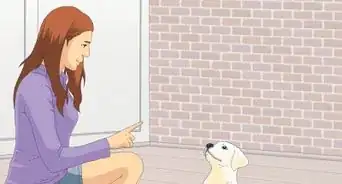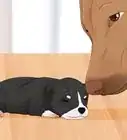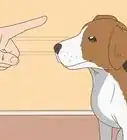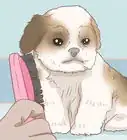This article was co-authored by Pippa Elliott, MRCVS. Dr. Elliott, BVMS, MRCVS is a veterinarian with over 30 years of experience in veterinary surgery and companion animal practice. She graduated from the University of Glasgow in 1987 with a degree in veterinary medicine and surgery. She has worked at the same animal clinic in her hometown for over 20 years.
This article has been viewed 62,142 times.
If you are caring for a newborn or very young pup, you may need to know how to tube feed the puppy. This is especially common if the puppy is an orphan or if the mother had a C-section. Veterinary professionals frequently tube feed puppies, but if you're not experienced, try using a pipette or bottle-feeding your puppy first. Only resort to tube feeding if your puppy refuses to suckle.
Steps
Putting the Feeding Tube Together
-
1Gather your supplies. You will need a 12 cc syringe, a soft rubber feeding tube, and a 16 in (41 cm) urethral catheter with a diameter of 5 French (for small dogs) and 8 French (for large dogs). These are the items you will use to create your feeding tube device. You will also need puppy milk replacer that contains goat milk, like ESBILAC®.
- You can also buy an already assembled feeding tube from your local veterinary office or pet store.
-
2Weigh the puppy. You will need to determine the puppy's weight so that you know how much milk replacer to give it. Place it on a scale to determine its weight. For every ounce of the puppy's weight, give him 1 cc or ml of the milk replacer.Advertisement
-
3Measure out the correct amount of milk into a microwaveable bowl. Add one extra cc to be careful. Heat the milk replacer up so that it is easier on the puppy's stomach. Place the milk into the microwave for 3 to 5 seconds so that it reaches a lukewarm temperature.
-
4Use the syringe to suck up the milk replacer. Draw the milk up until you have the measured amount of milk, plus one extra cc. The extra cc will be used to ensure that the puppy doesn't get any air bubbles, which could cause bloating or gas pain.
- Once the syringe has drawn up all of the milk replacer, press down gently until a tiny drop comes out of the syringe. Doing this will ensure that the syringe is working properly.
-
5Attach the feeding tube to the syringe. You will need to attach the end of the rubber feeding tube to the end of the syringe.
-
6Measure out the length of the tube you will insert into the puppy's mouth. To do this, place the tip of the rubber tube up against the side of the puppy's bottom, or last, rib, and run the tube from there to the tip of the pup's nose. Pinch the tube where it touches the puppy's nose and make a mark there with a permanent marker.[1]
Feeding the Puppy
-
1Place the puppy on a table. You should cover the table in a towel in case there is any spillage. Let the puppy lie down on all fours so that it is lying on its belly with its front legs outstretched and its back legs tucked up under it. Put a drop of the formula on the inside of your wrist to make sure that it is lukewarm and not too hot.
-
2Grasp the puppy's head with your hand. Hold the puppy's head firmly in between your index finger and thumb so that your fingers are located at the corners of the puppy's mouth. Tip the head slightly upward so that you can see what you are doing. Hold the end of the tube on the puppy's tongue and let it taste a drop of the milk. Doing this will help coat the esophagus and get her ready to eat.
-
3Insert the catheter slowly but efficiently. You will not want to go too slowly or else the pup may gag. Guide the tube over the tongue and down into the back of the throat. You will know you are on the right track when the puppy starts swallowing the tube. If it coughs or gags, remove the tube and try again.[2]
-
4Feed the tube into the puppy's mouth. Stop feeding the tube downward once the marked part of the tube reaches the pup's mouth. Check to make sure that the pup is not coughing, crying or gagging. If she is not, secure the tube by placing it between your index and middle fingers.
- Put a small amount of water in the tube to check if your puppy coughs or gags. If it's fine, attach the food syringe to the tube. If your puppy coughs, take out the tube and start over since the food could go into the puppy's lungs.
-
5Feed the puppy. After securing the feeding tube, depress the plunger of the syringe and feed the puppy 1 cc or ml at a time. To know when to let the puppy rest between cc's, count to 3 seconds in your head while slowly depressing the plunger. After the 3 seconds, check to see if there is any milk coming out of the puppy's nose. If there is, withdraw the tube as this means that the puppy is choking. After you have checked, depress the syringe for 3 more seconds.
- Hold the syringe perpendicular to the puppy for the most efficient feeding method.
-
6Remove the tube. Once all of the milk has been fed to the puppy, slowly remove the tube. To do this, gently pull it out while still holding the puppy's head. Once the tube has been removed, place your pinky in the puppy's mouth and let it suck on your finger for 5 to 10 seconds. Doing this ensures that the puppy will not throw up.
-
7Help the puppy to defecate. If possible, bring the puppy to its mother. Its mother will lick the puppy's anus, which will help the puppy to defecate. If the puppy is an orphan newborn, use a wet washcloth or cotton ball to simulate the mother's licking. Doing this is very important, as defecating will help the puppy remove any waste dammed up in its intestines.
-
8Check the puppy for gas or bloating. To do this, lift the puppy and stroke its belly. If it is very firm, it has gas or bloating. If this is the case, you will need to burp the puppy. To do this, lift the puppy by placing your palm under her belly and lifting up. Stroke its back and rump to help it burp.
-
9Repeat this feeding process every 2 hours for the first 5 days. After the 5 days are up, feed the puppy every 3 hours.
Warnings
- If you are using the tube to feed another puppy, rinse all of the parts before you feed the next pup.⧼thumbs_response⧽
- Never force a tube into a puppy's throat. If you are meeting resistance, it means that you are trying to get it into the windpipe, which could be fatal. Remove the tube and try again.⧼thumbs_response⧽
